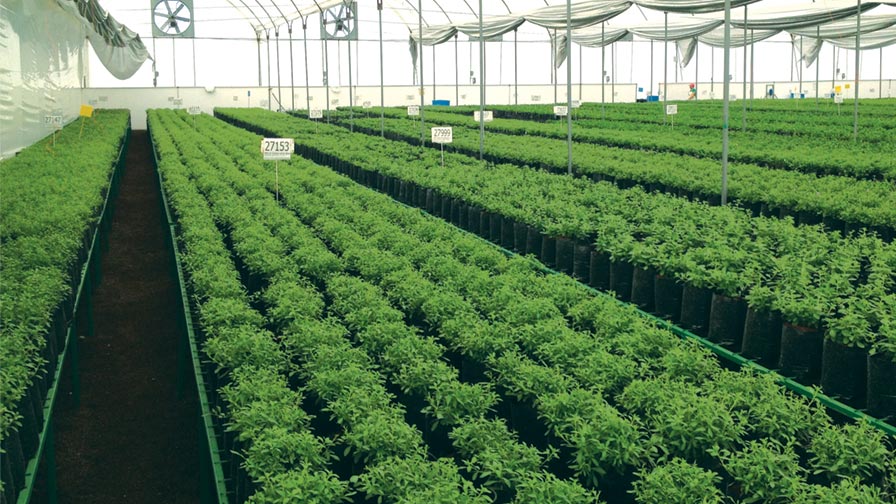What the Green Industry Can Do To Ease Supply Chain Challenges
 Supply chain disruptions plagued businesses in 2020, impacting almost every industry. Unfortunately, we haven’t seen the last of them yet in the green industry, and growers need to be prepared for a few more supply chain challenges in 2021.
Supply chain disruptions plagued businesses in 2020, impacting almost every industry. Unfortunately, we haven’t seen the last of them yet in the green industry, and growers need to be prepared for a few more supply chain challenges in 2021.
On the Live Goods Side
Forecasting plant sales during a normal year is challenging enough. Reacting quickly in response to unexpected demand swells created by a worldwide pandemic is another matter entirely when you are working with live goods that necessitate forecasting sales months and sometimes a year or more into the future.
With stories circulating of possible seed and plant scarcities for key vegetables, fruits, and ornamentals, particularly woody ornamentals and berries, and predictions of another good year for gardening, several growers have put their orders in well ahead of the typical fall ordering period to ensure they can get the product they need, and in some cases, they’ve ordered a little more product to ensure they are well-stocked for the season. This could mean those who weren’t as proactive may need to be more willing to accept substitutes for products they want, or they may miss out on potential sales because they’ve run out of stock.
All of this doesn’t necessarily mean plants will become the new toilet paper product no one can find on the shelves. Rather, consumers might need to get a little creative about when and where they look for their plants. If they’re set on a certain plant variety and no substitute will do, earlier ordering and purchasing will likely be key. They might also have to look for alternative supply sources further afield to find that specific cultivar they can’t do without, and prepare to pay a higher price for it.
On the Hard Goods Side
Supplies of key goods may be available, but the challenge is limited space to transport cargo, whether due to fewer flights or shortages of cargo containers. This is certainly the case for pots and trays suppliers who have reported significant delays in items they are trying to import.
Derek Moeller, President and CEO of McConkey Company, a full-line manufacturer and distributor of horticulture goods, says his company has received several calls from growers who are requesting last-minute production from McConkey’s domestic factory to replace delayed offshore product. Offshore is not a realistic option for growers right now, he says.
There are a few reasons Moeller cites for some of the troubles hard goods suppliers are experiencing:
- 40-foot cargo container availability is very low. This year containers are backed up across the world because of reduced labor availability and increased delays in container processing. The supplies might be available, but the container to ship them in is not.
- Reductions in cargo ship availability due to COVID-19 because of the complexities of managing crew safety and availability.
- Running up against the Chinese New Year means some new orders will not realistically even begin production until the end of February at best, and more likely, early March. Add to that the time to produce plus transportation issues, and growers likely won’t see offshore products until April.
On top of everything, freights costs are skyrocketing.
“Freight to the West Coast from China was around $2,800 last year; it is currently $5,200,” Moeller says. “To the East Coast, it’s risen from $5,000 to $7,500. Not only is product late, but it’s more expensive, too, due to cargo costs.”
All this means unprepared growers could be in for another wild ride in 2021 dealing with supply chain issues. But there are options, according to Moeller, who suggests that plastic vendors may have some production lines with more availability than others, so growers need to ask their suppliers what types of products have faster lead times.
Closer to Home
The supply chain disruptions exacerbated during the COVID-19 pandemic have sent businesses scrambling to spread out the supply chain risk for key products by sourcing from multiple suppliers at different locations instead of relying on a single supplier. Sources closer to home are now a more attractive option for many businesses.
“After 2020’s supply chain interruptions, now continuing into 2021, many industries are looking at relocating production to sources closer to their end-use market,” Moeller says. “Some labor-intensive products will be tough to justify, but manufacturers of products that can be economically produced at scale with low labor inputs will see increased demand from nearby markets. In the future, growers can avoid some of this supply chain risk by purchasing closer to home.”









